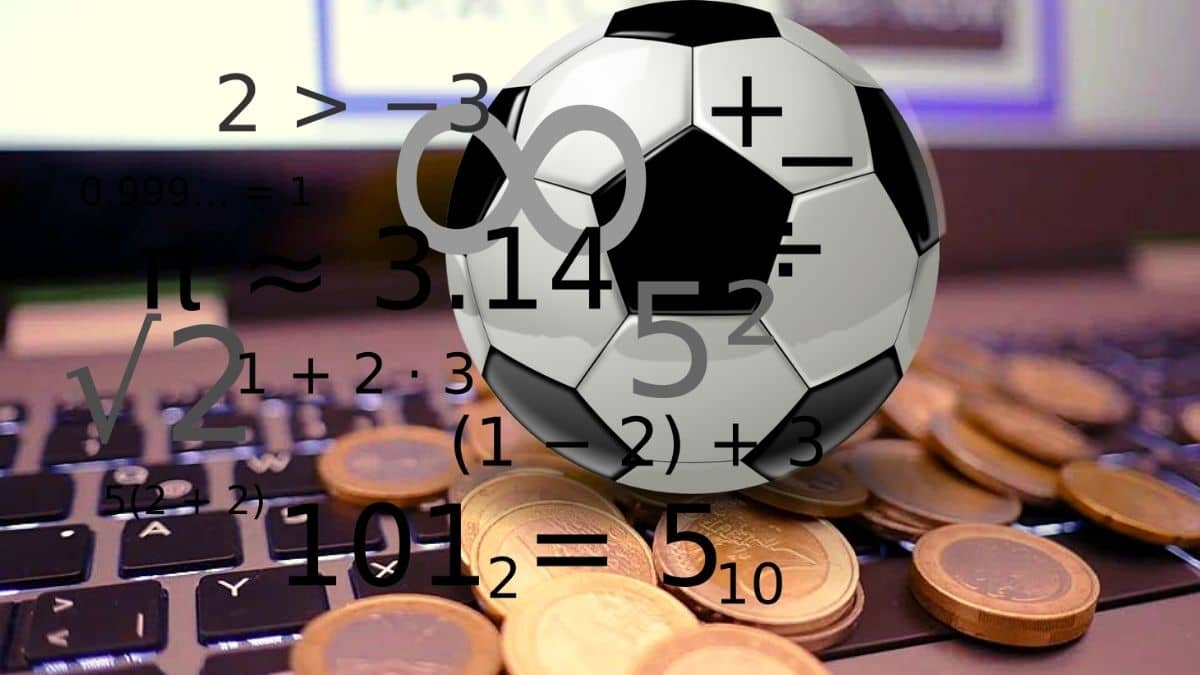Sports betting is an excellent way to increase the excitement you feel while watching a sporting event. However, for newbies, the world of betting can be perplexing. You must learn how to read the gambling odds and grasp the various types of sports wagers accessible. Moreover, you must comprehend the lingo used in the sports betting market. Besides, you’ll also need to find the top sportsbooks. So, we’ve selected a few fantastic ones before detailing the key wagers available to you.
What are the odds in betting?
In sports betting, you must combine your knowledge of the game with your gambling skills. So, you can profit from the outcome of specific games. Typically, bookmakers provide odds on which betters or gamblers put their wagers.
Furthermore, you’ll be able to appropriately put your chances of winning into perspective once you know the percentages of winning. Furthermore, when you play a game of chance with friends, your chances of winning are more even.
However, when you gamble in a casino or on pokie machines, the gambling odds are nearly never in your favor. Thus, the game is virtually always rigged in favor of the house. The basic purpose of gambling operators is to make as much money from consumers as possible.
Anyone who places wagers should take the effort to learn how to understand and calculate odds. The odds represent your selection’s likelihood of winning in the eyes of the bookies, as well as the amount of money you stand to gain if your gamble is successful.
Gambling odds may appear to be perplexing at first. So, we provide a comprehensive explanation to ensure that you understand how gambling odds function. By doing so, it can help you make more informed decisions when gambling online.

What are gambling odds?
Bookmakers calculate betting odds to represent what they believe is the possibility of an event.
These gambling odds are typically expressed as a fraction (2/1) or a decimal (3.0). There’s also the moneyline or American style. Moneyline odds involve putting a plus or minus sign (+200) in front of a number.
Furthermore, betting odds apply to any event on which bookies accept wagers. You can wager from horse racing and football to TV specials and politics.
Meanwhile, there are other types of bet that can affect the gambling odds like 1×2 betting and Asian handicap betting.
What exactly is probability in sports betting?
Probability simply refers to how likely something is to occur. So, if the bookmaker predicts a high probability outcome for an event, it is more likely to occur than not. Thus, if an event is a low probability, then it is less likely to occur than not.
A coin flip with two possible outcomes, heads or tails, is a very simple example of probability. The probability of getting heads is one in two, implying that the outcome has a 50% chance of winning. Usually, this is represented as gambling odds of 1/1. This is how punters can use betting odds to determine how likely bookmakers believe a result is to occur.
How To Determine Probability Using Gambling Odds?
Moreover, gambling odds are two numbers separated by a forward slash. Also, you may use them to calculate the likelihood of an event occurring.
How do you identify the probability (in percentage terms) from gambling odds? It is best explained by replacing the two numbers in the odds with letters. As an example, 2/1 becomes A/B. The formula is:
Probability (percentage) = B/(A+B).
Here are some examples of gambling odds that have been turned into percentages to determine the probability.
Let’s say the odds are 10/1. You can calculate the probability as 1/(10 + 1) = 0.09. This shows that there is a 9% possibility that this scenario will occur.
Let’s assume that the odds are 4/1. Then, you can calculate the probability as 1/(4 + 1) = 0.20. Therefore, you have a 20% chance this outcome will occur.
For example, you have an odds of 2/1. Then, you can calculate the probability as 1/(2 + 1) = 0.33. As a result, you have a 33% chance that this outcome will happen.
How to read gambling odds in sports?
So, you now know how to calculate the probability. Then, you may use the sports betting odds to compute the possible returns if you bet on an event.
Meanwhille, fractional odds show the potential profits in connection to the stake you place on the bet. For example, you bet $1 on West Ham to win at 4/1. Then, you will receive $5 if you win. This comes from a $4 profit plus your $1 wager.
Let’s say the gambling odds are 10/1 for every bet of $1. It means you have a $10 profit plus your $1 bet. For every $2 bet, you have 7/2 odds. It means you have a $7 profit plus your $2 bet. Alternatively, you can read it as: for every $1 you bet, you have a $3.50 profit plus a $1 bet.
Meanwhile, “odds against” are any gambling odds where the first number is greater than the second. On the other hand, “odds on” are any odds where the first number is less than the second.
Bookies believe that odds-on events are more likely to occur than odds-against ones, and vice versa for odds-against events.
Decimal Odds: How Does Gambling Odds Work?
In sports betting, the potential earnings include the stake when converted into decimal odds. Therefore, you must multiply your stake by the odds.
Meanwhile, betting exchanges usually used decimal odds because the punter is in control of the odds than the bookmaker. The following are some examples of how to read decimal odds.
- You can read 3.5 odds as you have a $3.5 profit plus your $1 bet.
- In 11.00 odds, it means you have an $11 profit plus your $1 bet.
- For 1.5 odds, you can read it as for $1 you wager, you can earn $1.50 profit plus your stake.
American Odds: What does the plus and minus mean in betting?
Oftentimes, bookmaker uses fractional and decimal betting odds to displays their prices on an event. Despite that, it is still useful to understand how the moneyline or American odds work.
Let’s go back to our coin toss example. In this case, the odds of getting a tail and a head are both even money. The gambling odds can be a 1/1 (fractional odds) or 2.0 (decimal odds). It also means that for a $1 bet, it will return $2. Likewise, it means you have a $1 profit plus your $1 stake.

What do plus and minus mean in betting?
In our example, the heads and tails results would be written as -100 or +100 in American or Moneyline odds. Meanwhile, 100 is a significant number in this example. So, what do plus and minus in betting mean? Let’s use the American odds in a football game this time.
- Man United at -145 odds
- West Ham at +130 odds
Let’s say you predict the West Ham will win. It means that the +130 indicates that for every $100 you bet on them, you will receive $230.
$130 plus your initial wager of $100.
Likewise, for a $10 bet, you would gain $23. You can also read it as a $10 stake plus $13 profit. It is calculated as ($10/$100) x 130.

What do the plus and minus mean in betting?
In sports betting, sportsbooks allocate negative numbers to the favorites on the betting line. Moreover, it represents how much you must spend to win $100. Positive numbers, on the other hand, represents the underdog. It represents the amount you could win if you wager $100.
Gambling Odds: What does minus mean in betting?
The minus sign in front of Man United’s odds indicates that they are favorites, and the computation is different. The -145 indicates that you will gain $100 for every $145 wagered. Therefore, a $10 bet would return $16.90. It is calculated as ($10/$145) x 100.
In both cases, the calculation for the $10 bet is:
American odds winnings = (Actual stake/American odds stake)
How Do You Calculate American Odds’ Implied Probability?
There are two formulas for computing implied probability, just as there are for calculating potential winnings.
For both positive and negative American odds, we must use both formulas. In addition, these formulas will provide you with the likelihood of a given outcome occurring. Let’s go back to the Man United vs. West Ham example.
- Man United at -145 odds
- West Ham at +130 odds
Negative American Odds Probability
Implied Probability = (Negative American odds / (Negative American odds + 100)) * 100
Therefore, you need to wager $145 when betting on the Man United. To calculate the implied probability, here is the formula.
(145/(145+100)) *100 = Implied Probability
0.5918 * 100 = 59.18%
Positive American Odds Probability
Implied Probability = (100/(positive American odds + 100)) * 100
If you are betting on West Ham, then you adjust the numbers as follows:
(100/(130+100)) * 100 = Implied Probability
(100/230) * 100 = Implied Probability
0.4348 * 100 = 43.48%
Understanding implied probability can assist you in identifying profitable betting opportunities where casinos may have undervalued a team. This also provides you with a solid opening.
What does “betting on the line” mean?
Betting on the line is the handicap line provided by the bookies to make the game equal. In football point spread betting odds, one team has odds at -110 to win by more than 9.5 points. On the other hand, the opposing team has odds at -110 to win by less than 9.5 points.

What does 9 to 2 gambling odds mean in sports betting?
The odds of 9 to 2 are fractional in sports betting. It promises you that for every $2 you stake, you’ll make $9. Therefore, a $100 bet at 9/2 would thus return $450. These sports betting odds are represented as +450 in the American format.
What are the odds of +200 mean in sports betting?
When odds are represented with a + or a – followed by a number, they are American moneyline odds. Therefore, a +200 represents the amount a bettor could win if he or she bets $100. If the wager is successful, the player will earn a total payout of $300. It is the sum of $200 net profit + $100 initial wager.
Are you ready to find the best odds available in sportsbooks betting in Singapore?
You are now prepared to take on the world of sportsbooks, armed with this new knowledge. Most sports bettors wager for fun, and you should too. Nonetheless, there is no harm in understanding how to read gambling odds and how they work. Likewise, it is best to recognize the occasional value betting chance. These odds can give you a better bang for your money.
Gambling Odds FAQs:
How do you place bets on odds?
American odds indicate either the amount of money you need to bet to win $100 or the amount of money you would win for every $100 wagered. In addition, it also depends on whether there is a negative (-) or positive (+) sign. The amount of money you win for every $1 stake is represented by decimal odds. And, fractional odds are the ratio of the amount earned (profit) to the amount wagered.
What does it mean to have negative betting odds?
These odds begin with a minus sign. It shows you that your possible profit will be less than 100% of your bey. Therefore, if you see a minus sign, it is the amount you must bet to win $100. Let’s say the odds are -105. It means that you must wager $105 to win $100. On winning bets, your stake is always repaid. Thus, your return, in this case, would be $205.
In sports betting, what is the best way to read betting odds?
A minus sign indicates how much you must wager to win $100. A plus sign represents how much profit you will make if you put in $100.
Why is decimal odds becoming more popular these days?
Bookmakers have always employed fractional odds, but decimal odds are becoming more popular. This could be because they are easier to calculate possible winnings.




